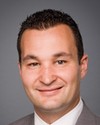Thank you for the questions. They are clear, so I'll remain focused.
With regard to 2005, the reference is made to the approach we took in the context of the way forward, and more specifically the savings that were to be accrued out of the approach we would take, for example, in changing the footprint. We had a footprint per employee of 21 square metres, on average; we went down to 18 square metres. These are essentially savings. There are investments to be made, but ultimately savings.
If I remember, we were able to meet the target to about 80%. This was successful. These resources have been essentially taken from the real property budget. We moved from that footprint that was more substantial in nature to a smaller footprint and we effected the savings.
With respect to the second point, on the IT, you're right, we have had challenges expressed by the OAG. I agree with her assessment, and I was quite clear in the response of the department.
There are two points I will make on that. The place where I have more challenges is in a properly defined and integrated IT investment plan. We have bits and pieces in the department. For years at the department it's been a bit of an amalgam of various components that came through time--the latest in 1993--but we had various bits and pieces that came together, and now we're forming a department. We have bits and pieces of a plan, but it's not integrated. If it's not integrated, you don't totally understand what your risk is. We're running big systems and you should totally understand your risk.
More importantly, an integrated investment plan means you're going to be putting in money. Right now, with my management team, I am essentially putting together an investment reserve to be able to fuel the investments that need to be done every year so that my legacy systems are corrected and my new systems are working correctly.
So we do acknowledge the need to move in that direction.





